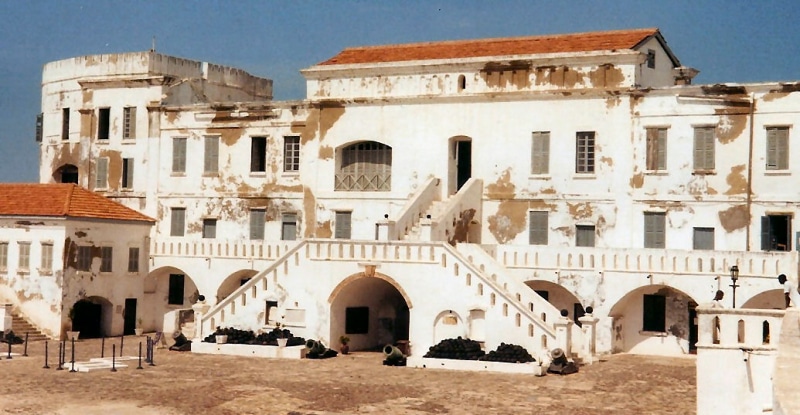Ghana is well-known for its rich culture and historical heritage. There are several must-see historical buildings and sites in Ghana, which include;
1. Jamestown Lighthouse
Jamestown is one of the two oldest historic sites in Accra city in Ghana. This town has been home to various communities since the 17th century. By the end of the 19th century, Jamestown had various heavy developments. Jamestown remains a great fishing harbor up to date.
The area has witnessed great population growth over the years. Jamestown Lighthouse is the most famous structure in this city. The original structure is the handiwork of the British as early as 1871. However, the current structure came to be in the 1930s. The Jamestown lighthouse has a height of 28 meters. Tourists enjoy a bird’s eye view of the Ussher Fort, the Bukom district, and the James Fort from the summit of the lighthouse. Jamestown is a popular tourist destination and one of Ghana’s most significant historic sites.
2. Asante Kingdom Buildings
The Ashanti Kingdom has been an influential community in Ghana since the 18th century in southern Ghana. Due to their boldness, this kingdom controlled a larger region with significant gold deposits during the ancient days. They ruled a large area of Ghana before the arrival of the Europeans.
The Asante Kingdom Buildings are thirteen houses. A large number of the Asante buildings were destroyed during the colonial days, but there are still some surviving cultural structures. These buildings are made of clay or mud walls and woven palm branch roofs. In 1980, Asante Kingdom Buildings were recognized as one of Ghana’s two UNESCO World Heritage Sites.
3. Forts and Castles
Forts and Castles were constructed between the 15th and 18th centuries. These magnificent buildings cover approximately 500 km, situated between the coast of Beyin in the west and Keta in the east. Consequently, they played an important role in the gold and slave trade.
These Ghanaian forts are better preserved than other forts in West Africa. In 1979, UNESCO recognized forts and castles as World Heritage Sites. The fort witnessed a succession of colonial occupants, including traders from Denmark, Britain, Germany, Holland, Portugal, Spain, and Sweden.
4. Paga Nania
This is one of the key historical sites in Ghana that attracts many tourists. The origin of this slave camp dates back to 1704. Slave raiders came to Paga and the surrounding communities and held people as slaves. This activity led to the establishment of slave camps in the area. Paga Nania is situated in the upper Eastern region of Ghana and is in pathetic status today. What remains are water troughs in the rock, viewing posts, and grinding stones. The management has been requesting the government to renovate the camps to make them attractive again.
5. Holy Trinity Cathedral
The Holy Trinity Cathedral is part of the Anglican Diocese of Accra. This traditional building was completed in 1894 but was established as a cathedral in 1909. The British government funded the construction of this cathedral during their leadership.
The rectangular bell tower is the most significant feature of this holy Trinity Cathedral. The church is a place of worship and one of Ghana’s historic sites that tourists want to visit.
6. Salaga Slave Market
The Salaga market was an important trading route linking the northern and southern Sahel. Its location makes it an important route for agricultural products. During the trans-Atlantic slave trade era, the Salaga Slave Market served as a route for moving enslaved people to the coast for onward exportation. It is not easily accessible due to its difficult terrain and therefore receives a small number of tourists.
